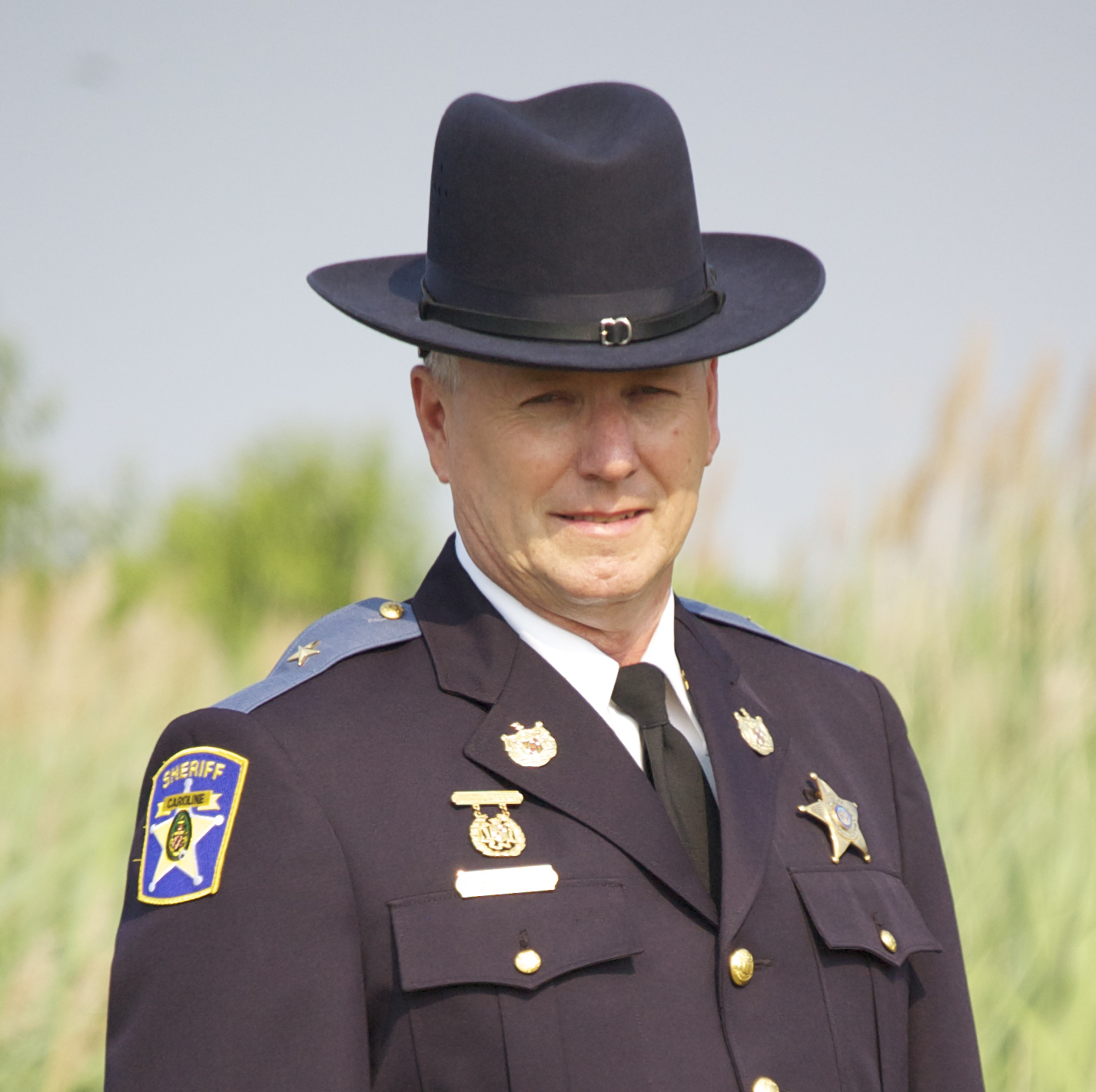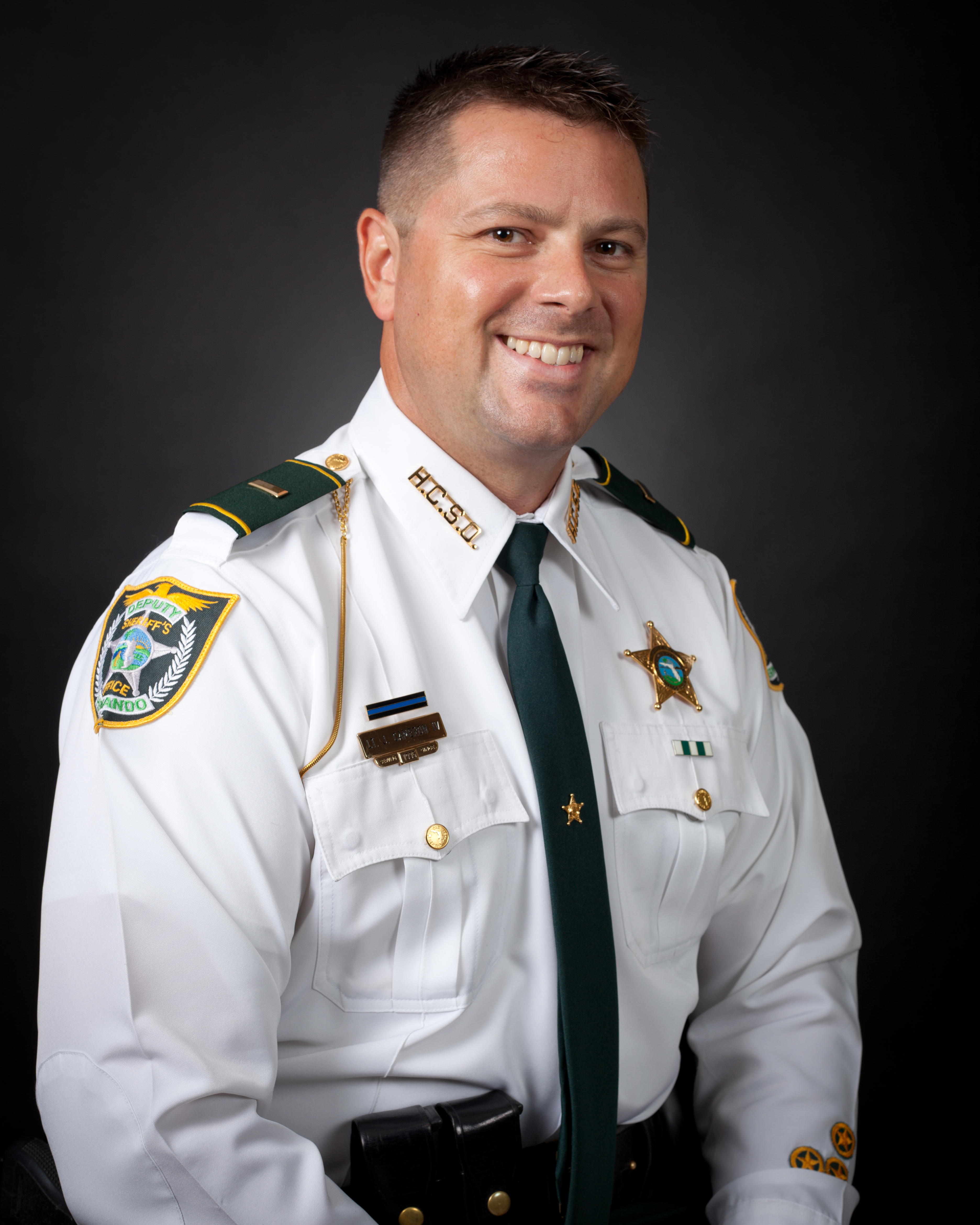Sheriff Kills Judge - Unfolding A Kentucky Tragedy
A truly upsetting event has shaken a Kentucky community, where a person in a position of public trust stands accused of a very serious crime. This situation involves a former law enforcement leader and a judge, two figures meant to uphold the rules, and it has left many people feeling quite shocked. It is, you know, a story that brings up many difficult thoughts about what can happen when trust breaks down in a big way.
The details coming out tell of a shooting that took place in a courthouse chamber, a place where important decisions are usually made with great care. It was, apparently, a Thursday when this incident unfolded, leading to charges against the person who once held the title of sheriff for Letcher County. This particular event has, in a way, cast a long shadow over the area, leaving people to wonder about the circumstances that led to such a profound loss.
The person facing these accusations is Shawn M. Stines, who was the sheriff for Letcher County. He is now charged with murder in the first degree. The initial look into what happened suggests that Mr. Stines, who is 43 years old, was the one who fired the weapon. This situation involves someone known to the community in a significant public role, and it has, really, prompted a lot of questions about how something like this could come to pass in a place meant for justice.
Table of Contents
- Biography of Shawn Mickey Stines
- What Happened Between the Sheriff and the Judge?
- What Led to the Accusations Against the Sheriff?
- How Does Surveillance Footage Play a Role?
- What About the Lawsuit's Claims?
Biography of Shawn Mickey Stines
Shawn Mickey Stines, a name that once represented law enforcement in Letcher County, now finds himself at the center of a very serious legal matter. He held the position of sheriff, a role that typically carries a great deal of respect and responsibility within a community. People often look to their sheriff for safety and for upholding what is right. Mr. Stines, at the time of the reported incident, was 43 years of age. His journey from being a community leader to facing such grave accusations is, in a way, something that has certainly caught the attention of many.
Before these events, his daily life would have involved the duties of a sheriff, which include maintaining public peace, carrying out court orders, and generally looking after the safety of the people in his county. It is, you know, a job that requires a steady hand and a clear head. The transition from that kind of public service to being accused of a crime of this nature is a profound shift, one that has undoubtedly sent ripples through the small Kentucky town he served. His personal details, while limited in what we know, point to a person who had reached a certain point in his life and career.
The situation involving Mr. Stines has, in some respects, brought forward discussions about the pressures and responsibilities that come with holding a public office, especially in law enforcement. It also brings into focus the personal lives of those who serve, and how events can take unexpected turns. The community is, apparently, trying to make sense of how someone in his position could become involved in such a tragic occurrence, especially one that resulted in the death of another public figure.
Personal Details and Bio Data of Shawn Mickey Stines
| Detail | Information |
|---|---|
| Full Name | Shawn Mickey Stines |
| Age at Incident | 43 years old |
| Former Position | Letcher County Sheriff |
| Accusation | Murder in the first degree |
| Legal Representation | Jeremy Bartley (Attorney) |
| Location of Hearing | Morgan County Courthouse |
What Happened Between the Sheriff and the Judge?
The events that transpired on that Thursday in Letcher County are, in some respects, truly difficult to process. The initial information suggests a very direct and shocking act. Sheriff Shawn "Mickey" Stines is accused of entering the chambers of Judge Kevin Mullins at the Letcher County Courthouse. This location, a judge's chambers, is typically a place of quiet reflection and legal work, a space where decisions are carefully considered. What happened there, according to the accusations, was a sudden burst of violence.
It is alleged that Mr. Stines, who was 43 years old, fired a number of shots at Judge Kevin Mullins. The information indicates that eight bullets were reportedly used in this tragic event. Judge Mullins, who was 54 years old, was a district judge, and he was found killed in his own chambers. This detail, that he died in his own workplace, makes the event, you know, even more poignant for those who knew him and the community at large. The fact that the two men were friends adds another layer of sadness to the whole situation, making it feel very personal and deeply upsetting for many.
The suddenness of the event, happening in a place of justice, has left a profound mark. It’s not every day that you hear of such an accusation involving two public figures, especially one where a law enforcement officer is accused of taking the life of a judge. This situation has, naturally, raised many questions about the nature of their relationship and what could have possibly led to such a violent conclusion. The community is, very, trying to come to terms with the idea that this happened right in the heart of their local legal system.
The Tragic Encounter - Sheriff Kills Judge
The details surrounding the moment the sheriff kills judge Kevin Mullins are, in a way, quite stark. The information suggests that the former Letcher County Sheriff, Shawn Mickey Stines, went into the judge's private office. This space, the judge's chambers, is usually a secure and private area, a place where legal matters are handled away from the public eye. The fact that the alleged incident happened there, rather than somewhere else, adds a certain gravity to the situation, making it feel very much like a violation of a safe space.
What followed, according to the accusations, was a series of gunshots. The specific number of rounds, eight, gives a picture of the intensity of the event. Judge Kevin Mullins, a person who dedicated his life to the law, was reportedly shot and killed during this encounter. It’s a very somber thought to consider that someone in his position, someone who made decisions that affected many lives, met such a sudden end in the very place he worked. The community is, sort of, trying to understand the full weight of this loss, especially given the public roles of both individuals involved.
This tragic encounter between the sheriff and the judge has, of course, led to a swift and serious response from legal authorities. The event itself is a deeply unsettling one, not just for the families involved, but for anyone who believes in the rule of law and the safety of public servants. It is, you know, a story that will likely be discussed and analyzed for a long time to come, as people seek to understand the underlying reasons for such a devastating outcome, and how a sheriff kills judge in such a public manner.
What Led to the Accusations Against the Sheriff?
Following the tragic events in Letcher County, the immediate response from law enforcement was, quite naturally, to begin a thorough examination of what occurred. The preliminary investigation, which is the first step in gathering facts, quickly pointed to Sheriff Shawn M. Stines. This initial look into the matter indicated that he was the person who fired the shots that led to Judge Kevin Mullins' death. This finding, you know, is what set the stage for the very serious charges that were brought against him.
The accusation that followed was murder in the first degree, which is a charge reserved for the most serious cases where there is an allegation of intentional killing. This is a very significant legal step, one that means the authorities believe there is enough evidence to suggest a deliberate act. The fact that a sitting sheriff, a person sworn to uphold the law, is facing such an accusation is, in a way, a truly shocking development for the community and for the wider legal system. It has, of course, led to a lot of discussion about accountability and justice.
The process of building a case against someone, especially someone in a public role, involves careful collection of details and evidence. The early findings of the investigation were, apparently, enough to move forward with these charges. This situation has, in some respects, put a spotlight on the procedures that follow such a serious event, ensuring that every step is taken to understand exactly what happened and why. It’s a moment that tests the very foundations of the legal system, as it seeks to address a crime that involves two of its own key figures.
Legal Proceedings After the Sheriff Kills Judge
Once the accusations were made, the legal process began to unfold, bringing with it a series of formal steps. Former Letcher County Sheriff Shawn Mickey Stines has been seen with his attorney, Jeremy Bartley, during his preliminary hearing. This hearing is, basically, an early stage in the legal journey where a judge decides if there's enough reason to believe a crime was committed and that the accused person might have done it. It’s a very important step that determines if the case will move forward to a full trial.
These hearings are, you know, a fundamental part of how the justice system works. They are designed to ensure that there is a basis for the charges before proceeding further. Mr. Stines and his legal representative were present at the Morgan County Courthouse for this stage of the process. The atmosphere at such a hearing is, naturally, quite serious, as the weight of the accusations hangs over the proceedings. The community is, perhaps, watching these developments closely, eager to see how the facts will be presented and what conclusions will be drawn.
The legal actions taken after a sheriff kills judge are, in some respects, very complex, involving many rules and procedures. The preliminary hearing is just one part of what will likely be a lengthy process. It is, of course, a time for the legal teams to start laying out their positions and for the court to begin its careful consideration of the evidence. This whole situation underscores the solemnity of the legal system and its role in addressing even the most difficult and high-profile cases involving public figures.
How Does Surveillance Footage Play a Role?
In cases like this, where a sheriff kills judge, visual evidence can be incredibly important in helping to piece together what happened. Surveillance footage from the Letcher County Courthouse has, apparently, become a significant part of the investigation. This kind of video can offer a silent, objective account of events, showing movements and interactions that might otherwise be difficult to confirm. It’s, you know, like having an extra pair of eyes that were present when the incident took place.
The footage reportedly shows Sheriff Shawn Mickey Stines and Judge Kevin Mullins together moments before the shooting. Specifically, it captures an exchange of cell phones between the two men. This detail, the swapping of phones, is, in a way, a very interesting piece of information, as it suggests some form of interaction or communication right before the tragic event unfolded. What exactly was discussed or what the purpose of the exchange was remains part of the ongoing inquiry, but the visual record of it is, naturally, a key element.
The presence of surveillance footage means that investigators have a direct visual record of certain moments leading up to the alleged crime. This can be very helpful in establishing timelines and confirming who was where and when. It’s, in some respects, a critical tool in building a clearer picture of the events that transpired in Whitesburg, Kentucky. The video evidence provides a concrete basis for examining the interactions between the two men just before the judge was fatally shot in his chambers, offering a silent witness to the moments before a sheriff kills judge.
Visual Evidence in the Case of Sheriff Kills Judge
The visual evidence in the case where a sheriff kills judge is, quite simply, a very important part of the puzzle. Surveillance footage is often seen as a reliable way to capture events as they happen, without bias. In this particular situation, the cameras at the Letcher County Courthouse reportedly recorded interactions between Shawn Mickey Stines and Kevin Mullins just before the tragic shooting. This kind of recording can, you know, provide a very direct look at what occurred, offering details that spoken accounts might miss.
The footage shows a moment where the two men, the sheriff and the judge, exchanged cell phones. This specific action, the handing over of a device, is, in a way, a small but potentially significant detail that could offer clues about their interaction right before the fatal shots were fired. It’s a piece of the story that the video tells without words, allowing investigators to observe the final moments leading up to the incident. The fact that this exchange happened right before the judge was shot in his Whitesburg, Kentucky, chambers makes it, very, a central point of interest for those trying to understand the sequence of events.
Having this visual record means that the investigation has a tangible piece of evidence to work with, something that can be reviewed repeatedly. It allows for a careful examination of the timing and nature of their interaction. This kind of evidence is, in some respects, often crucial in legal proceedings, as it can help to confirm or challenge different accounts of what happened. The surveillance footage, therefore, plays a very central role in shedding light on the events that led to the accusation that a sheriff kills judge.
What About the Lawsuit's Claims?
Beyond the criminal charges, there is also a civil lawsuit that has been brought forward in connection with this tragic event. This lawsuit introduces another layer to the situation, focusing on claims of responsibility that extend beyond the immediate actions of the sheriff. It specifically accuses the sheriff's office of “deliberate indifference in failing to adequately train and supervise” its personnel. This phrase, "deliberate indifference," is, you know, a serious legal term that suggests a knowing disregard for potential harm or for the proper functioning of duties.
The lawsuit’s claims point to a broader issue of accountability, suggesting that there might have been shortcomings in how deputies were prepared for their roles and how their actions were overseen. It’s not just about what happened on that specific day, but also about the systems and procedures that were, or were not, in place. This kind of claim often seeks to establish that a larger entity, like a government office, holds some responsibility for the actions of its employees, especially when those actions lead to such grave outcomes. It is, perhaps, a way for those affected to seek justice and to ensure that similar incidents might be prevented in the future.
The mention of a specific deputy, Ben, in the lawsuit’s accusation about failing to adequately train and supervise, suggests that the scope of the legal challenge might include other individuals or practices within the sheriff's department. This aspect of the case brings up questions about organizational responsibility and the duty of care that public offices owe to their employees and the community. It’s, in a way, a very important part of the ongoing legal fallout from the situation where a sheriff kills judge, as it looks at systemic issues rather than just individual actions.
Allegations of Negligence After Sheriff Kills Judge
The lawsuit that has come to light after the sheriff kills judge introduces allegations of a different kind, focusing on what might be called a lack of proper care or oversight. The core of these claims is that the sheriff's office showed "deliberate indifference" by not providing enough training or supervision. This means the lawsuit is suggesting that the office, as an entity, was aware of certain needs or risks but chose not to act on them, leading to negative consequences. It is, you know, a very serious charge that goes to the heart of how a public service organization is run.
The claims of negligence extend to the training and supervision of deputies, with one deputy, Ben, specifically mentioned in the lawsuit. This implies that the lawsuit believes there was a failure to properly prepare or guide the people working under the sheriff. When a public office is accused of such a thing, it raises questions about the standards of practice and whether those standards were met. This part of the legal action is, in some respects, about ensuring that public safety organizations operate with the highest level of care and responsibility.
These allegations of negligence are distinct from the criminal charges but are, naturally, deeply connected to the tragic events. They aim to hold institutions accountable for their role in creating an environment where such an incident could occur. The lawsuit’s focus on the failure to train and supervise, especially after a sheriff kills judge, highlights the importance of proper protocols and oversight within law enforcement agencies. It’s a way for the legal system to examine not just the actions of an individual, but also the broader responsibilities of the office they served.

Sheriff Carmine Marceno - Lee County Sheriff's Office

Meet The Sheriffs

Hernando County Sheriff Active Calls